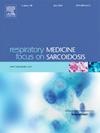Adherence to the Chronic Obstructive Pulmonary Disease guidelines in primary care: The Greek COPD COCARE study
IF 3.1
3区 医学
Q2 CARDIAC & CARDIOVASCULAR SYSTEMS
引用次数: 0
Abstract
Purpose
Although adherence to COPD guidelines among general practitioners (GPs) is essential for providing effective patient care, research indicates significant variation in their implementation. We aimed to evaluate adherence to COPD guidelines in primary care in Greece and explore opportunities for improvement.
Methods
This cross-sectional study was conducted in eight primary care practices in Crete, Greece with 10 GPs participating. Patients identified by GPs with COPD diagnosis were included. Clinical performance vs current guidelines was categorized into levels of appropriateness: excellent (>80 %), good (60–80 %), adequate (40–59 %), inadequate (20–39 %), and very inadequate (<20 %).
Results
253 clinical records were reviewed. Adherence to guideline statements presented an excellent/good adherence for smoking (94 %), vaccination (93–96 %), exacerbations (72 %) and co-morbidities recording (87 %) and further workup with chest X-ray or CT (71 %). However, guideline-concordant prescriptions for inhaled therapies were documented in only 34 % of the patient population. The most outstanding areas for improvement included evaluating COPD risk factors beyond smoking (14 %), measuring alpha1-antitrypsin levels (2 %), monitoring treatment adherence (12 %), referring patients to pulmonary rehabilitation (8 %), considering eosinophil counts for treatment initiation (10 %), developing written self-management plans (10 %), and assessing non-prescribed medications (19 %). Guideline adherence varied substantially between rural and urban settings across several key areas.
Conclusion
Our results show that adherence to COPD guidelines among GPs is suboptimal and varies between rural and urban settings. Such information must be accounted for by health care professionals and administrators in primary care, to improve strategies and establish better clinical practices.
在初级保健中坚持慢性阻塞性肺疾病指南:希腊COPD COCARE研究
目的:尽管全科医生(gp)对COPD指南的遵守对于提供有效的患者护理至关重要,但研究表明其执行情况存在显著差异。我们的目的是评估希腊初级保健对COPD指南的依从性,并探索改进的机会。方法:本横断面研究在希腊克里特岛的8个初级保健实践中进行,共有10名全科医生参与。纳入由全科医生诊断为COPD的患者。临床表现与现行指南的适当性分为:优秀(bb0 80%)、良好(60-80%)、足够(40-59%)、不充分(20-39%)和非常不充分(结果:审查了253份临床记录)。对指南声明的依从性显示,吸烟(94%)、疫苗接种(93-96%)、恶化(72%)和合并症记录(87%)以及进一步胸部x线或CT检查(71%)的依从性极佳/良好。然而,只有34%的患者记录了符合指南的吸入疗法处方。最突出的改进领域包括评估吸烟以外的COPD危险因素(14%)、测量α - 1抗胰蛋白酶水平(2%)、监测治疗依从性(12%)、转诊患者进行肺部康复(8%)、在开始治疗时考虑嗜酸性粒细胞计数(10%)、制定书面自我管理计划(10%)和评估非处方药物(19%)。在几个关键地区,农村和城市环境对指南的依从性差异很大。结论:我们的研究结果表明,全科医生对COPD指南的依从性不是最佳的,并且在农村和城市环境中有所不同。初级保健的保健专业人员和管理人员必须考虑到这些信息,以改进战略和建立更好的临床做法。
本文章由计算机程序翻译,如有差异,请以英文原文为准。
求助全文
约1分钟内获得全文
求助全文
来源期刊

Respiratory medicine
医学-呼吸系统
CiteScore
7.50
自引率
0.00%
发文量
199
审稿时长
38 days
期刊介绍:
Respiratory Medicine is an internationally-renowned journal devoted to the rapid publication of clinically-relevant respiratory medicine research. It combines cutting-edge original research with state-of-the-art reviews dealing with all aspects of respiratory diseases and therapeutic interventions. Topics include adult and paediatric medicine, epidemiology, immunology and cell biology, physiology, occupational disorders, and the role of allergens and pollutants.
Respiratory Medicine is increasingly the journal of choice for publication of phased trial work, commenting on effectiveness, dosage and methods of action.
 求助内容:
求助内容: 应助结果提醒方式:
应助结果提醒方式:


